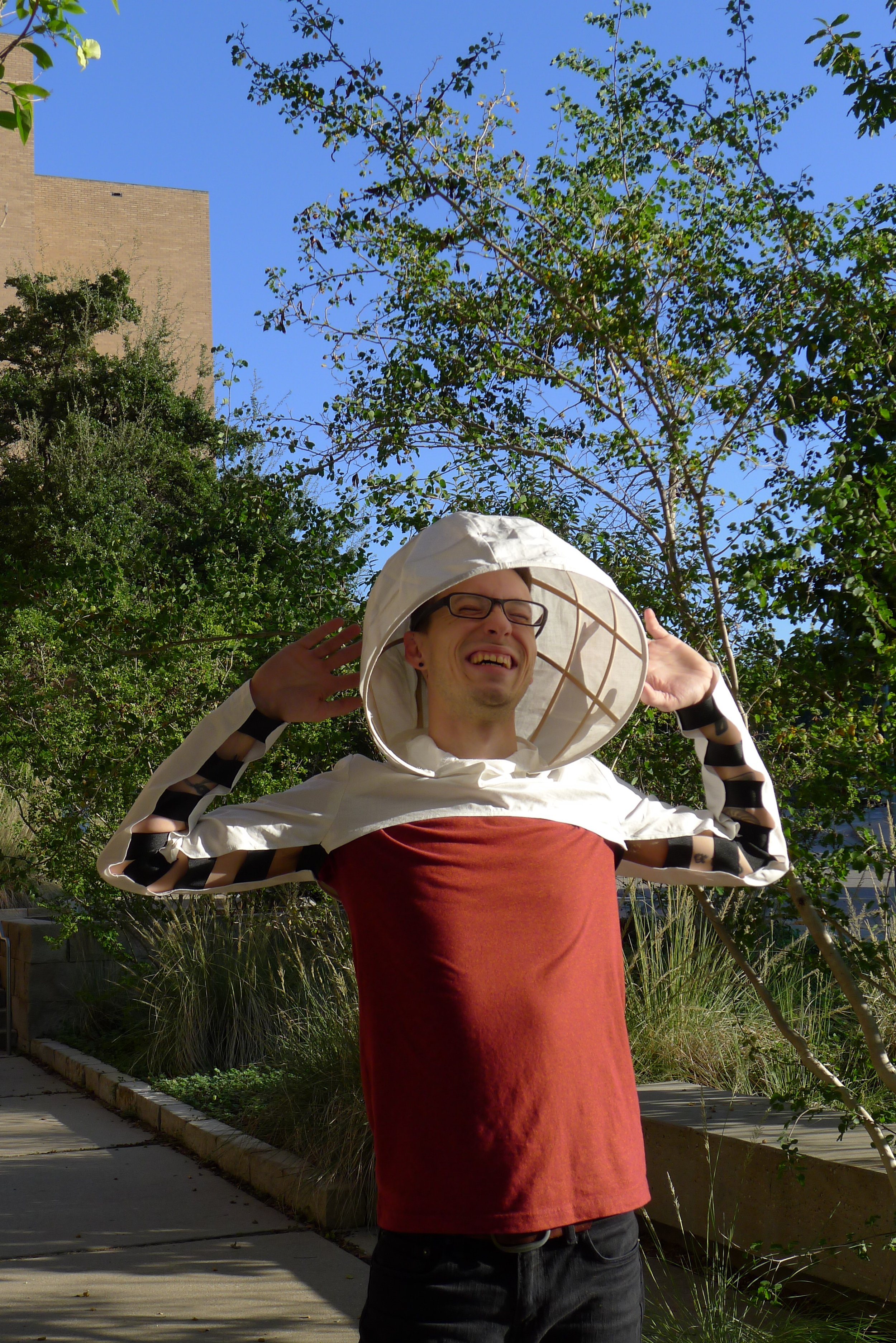CLOTHING AS
SHELTER: ParaSol
ParaSol, garment #1, Clothing as Shelter collection - 2015
This collection of garments interrupts the logic of the fast fashion system by establishing a design logic derived from a specific geographic and cultural context. The collection is composed of a series of replaceable and interchangeable components made of regional and renewable materials ParaSol is the first garment in this collection.
Para Sol is one piece in a collection of recombinant and replaceable garments that can be layered and work in different configurations to accommodate Austin’s seasonal and daily shifts in temperature: sweltering mid-summers, and fluctuations on winter’s days from frosts to a balmy 70-degree F.
This design is intended for use in the hottest summer months when temperatures peak around 105-degrees F. It lightly covers both head and arms and easily slips on over any light sleeveless garment. It provides a protective shade while walking, leaves the arms free and creates a through-draft; channeling air to facilitate comfort through an evaporative cooling process.
This garment presents a new and unfamiliar design vocabulary, one driven by the requirements of place and politic. The wearer conspicuously presents on the street as a means of advocacy for a particular lifestyle; that of the walker who chooses to travel by more sustainable means rather rely on non-renewable fossil fuels and the mandate to arrive quickly.
The materials and structure of the garment are indeed expressive of function, but do not conform to any particular clothing typology, although they might allude to techniques used in the construction of lobster baskets, or Asian parasols, and there is perhaps a nod to the future as imagined by Stanley Kubrick, or the pioneer wagons that once traversed the American West.
While this design mitigates the effects of the environment on the body and advocates sustainable lifestyle choices, it also has the potential to initiate new relationships between those undertaking the design of clothing, architecture, infrastructure and manufacturing in these sub-tropical regions of the United States. Para Sol has become the point of departure for conversations with local garment producers, fiber farmers and craft workers. It is through such interventions and the conversations that they initiate, that the seeds of regionally appropriate, collaborative development plans may arise.
—
MATERIALS
Split bamboo structural element, bamboo weave fabric exterior
DIMENSIONS
Size 8-10 (USA) Medium






